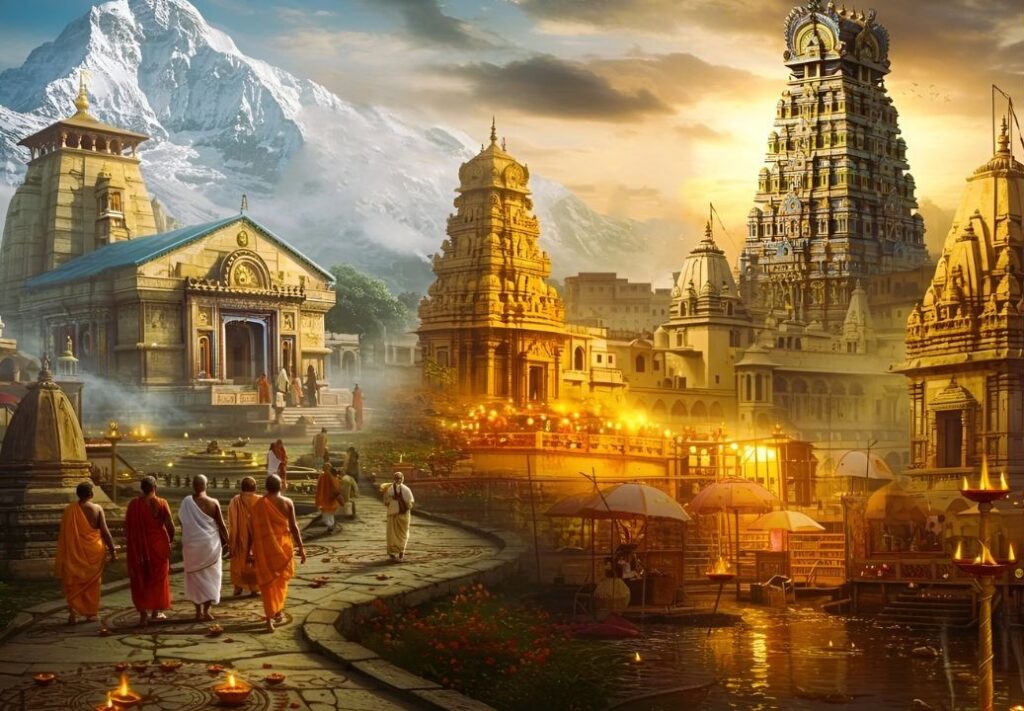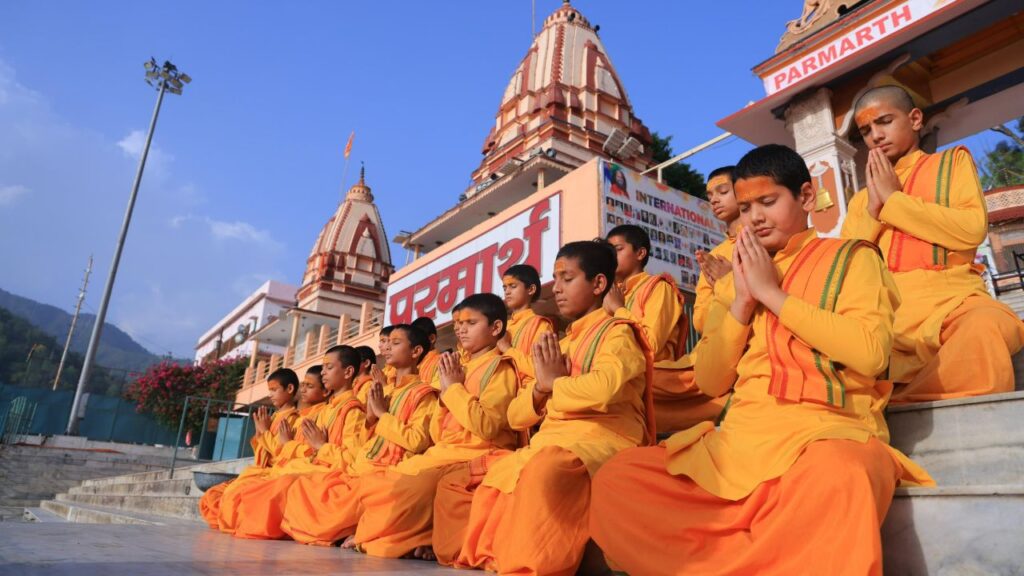
When you read the history of South Asia, one pattern repeats itself: invaders did not merely loot royal treasuries, they often struck at temples first. At first glance this looks like religious iconoclasm. Look closer, though, and a clearer strategic logic emerges: in pre-modern India temples were not only sanctuaries of faith but hubs of knowledge, administration, art and local economy. Destroy the temple and you cripple a polity’s spiritual authority, its economic heart and its ability to train future administrators and craftsmen.

Temples as universities, banks and town halls
Far from being single-use buildings for ritual, many Indian temples functioned as complex institutions. They sponsored schools, libraries, performance arts, granaries, courts and artisans. They received land endowments and paid dozens, often hundreds, of salaried personnel, sustaining entire urban and rural micro-economies. Modern scholarship that maps the “temple economy” in ancient and medieval India shows temples acted as engines of agrarian redistribution, urban growth and cultural patronage.
The scale is visible at specific sites. The Brihadisvara (Brihadeeswarar) temple at Thanjavur, the Chola Big Temple, carries inscriptions that list hundreds of temple employees, including priests, dancers, musicians, accountants and craftsmen, as well as endowment details. Contemporary accounts describe the temple supporting large numbers of artists and household staff. These were not incidental: the temple complex was an economic and cultural corporation in stone.
Likewise, the subcontinent’s famous learning centres, Taxila (Takshashila), Nalanda and Vikramashila, show how spiritual institutions and higher learning were interwoven. Nalanda is routinely described as one of the world’s great ancient residential learning centres. Taxila and Vikramashila were regional hubs teaching medicine, law, grammar, logic and scriptures. These institutions drew students from across Asia and anchored intellectual life.

Vedic Gurukul System, India’s decentralized model of learning
Alongside these monumental institutions, India sustained a decentralized Vedic Gurukul system which flourished for centuries. In this system, students (śiṣyas) lived with their teacher (guru) in an ashram or small residential setting where education was holistic. Beyond memorizing the Vedas, pupils studied mathematics, astronomy, grammar, logic, philosophy, Ayurveda, music and martial arts. Education was not compartmentalized but aimed at character-building, discipline and practical life skills.
Historical evidence from travelers like Al-Biruni and from colonial administrators such as William Adam (whose reports were later studied by Dharampal) indicates that India had a widespread network of indigenous schools even in the 18th and early 19th centuries. Dharampal’s research showed that almost every village in Bengal and Madras had some form of elementary education, often linked to temples or community-supported teachers. In these gurukuls, education was imparted in Sanskrit, Prakrit or regional languages, ensuring that knowledge was both locally accessible and philosophically deep.
Great intellectual traditions also grew out of this system. Panini, the world’s foremost grammarian, and Patanjali, the author of the Yogasutras, were both products of such gurukul learning environments. This web of thousands of small centres ensured that knowledge was not centralized in only a few universities but diffused throughout society. Kings and communities endowed land and resources to gurukuls, just as they did for large temples, making the system sustainable and deeply rooted.
It was precisely this web of gurukuls that the colonial education system dismantled. When Thomas Macaulay introduced his English Education Minute in 1835, he openly dismissed traditional learning as inferior and argued for creating a class of Indians educated in English to serve administrative needs. As a result, Sanskrit, Persian and vernacular traditions of study were devalued, and the gurukul system that had survived for millennia declined rapidly.
Why temples were irresistible targets
Given that temples held treasure, land revenue, political symbolism and educational networks, they were natural targets for conquerors for two broad, complementary reasons.
First, material gain. Early raid narratives make clear that plunder was a primary motive for many campaigns. The sack of Somnath in the 11th century by Mahmud of Ghazni illustrates how temple wealth, including gold, precious objects and war elephants, financed further campaigns and enhanced the raider’s prestige.
Second, political symbolism. Historians such as Richard Eaton have argued that temple desecration often had a calculated political meaning. Temples were tied to royal legitimacy. To attack or appropriate a ruler’s temple was to signal the transfer of sovereignty and to break a community’s rallying point. Desecration could therefore be a tool of statecraft, not merely blind iconoclasm but an attempt to erase or replace a defeated ruler’s visible claims to authority.
So invaders who wanted quick revenue and durable political control found temples to be efficient targets. They were wealthy, highly visible, and central to a polity’s ability to reproduce its elites and culture.

Colonial seizure of temple power, laws not swords
If medieval invaders used force and plunder, the British imperial project reached the same ends with legislation and administration. Starting in the early 19th century the Company state introduced regulations that brought temple revenues under the supervision of colonial revenue boards. For example, the Madras Regulation of 1817 and similar measures in other Presidencies gave colonial bodies oversight of endowments and land attached to temples. Over decades the British reconfigured temple landholding, revenue use and institutional autonomy. They argued that oversight would prevent corruption, while in practice diverting resources and breaking traditional patterns of patronage.
This legal-administrative remaking was reinforced by cultural policy. Macaulay’s English Education Minute prioritized English language education and Western curricula over Sanskrit, Persian or vernacular systems. The result was the systematic privileging of English-style schools and the erosion of gurukul and temple-based learning networks that had trained priests, scribes and specialists for centuries. The combined effect of administration and educational reform weakened the institutional ecosystem that temples had supported.
Losses and the long tail of cultural damage
What was lost was not just stone and gold. When temples and gurukuls stopped being the local seat of learning, dispute resolution and creative patronage, societies lost transmission mechanisms for traditional crafts, oral sciences, ritual literacy and localized welfare. The physical destruction of libraries and monasteries and the legal reassigning of temple property both contributed to a knowledge discontinuity that took centuries to partially repair.
At the same time, local communities often displayed resilience. Temples were rebuilt, local traditions adapted, and modern conservation and revival efforts, such as the protection of Nalanda or conservation of Vikramashila ruins, are attempts to mend the rupture.
A careful verdict
It would be simplistic to say temples were destroyed only for one reason or to reduce history to a single conspiracy. Invaders’ motives varied across time and actor. Plunder-hungry raiders, political conquerors seeking legitimacy, and later colonial administrators following bureaucratic logics all played parts. But the through-line is clear. Because temples and gurukuls were multi-dimensional institutions, economic, educational, juridical and symbolic, they were natural focal points for those who wanted to extract wealth or claim authority. The British achieved similar ends by different means, controlling revenue and remaking education.
Reclaiming this history matters because it changes how we think about heritage. Temples are not simply repositories of ritual; they were scaffolds of social knowledge. If modern policy sees them only as tourist sites or ritual spaces, we risk repeating the very narrowing that eroded past institutions. Preserving stonework is vital, but so is reviving institutional memory: archives, traditional crafts, and local knowledge networks that once made these places engines of learning and livelihood.





